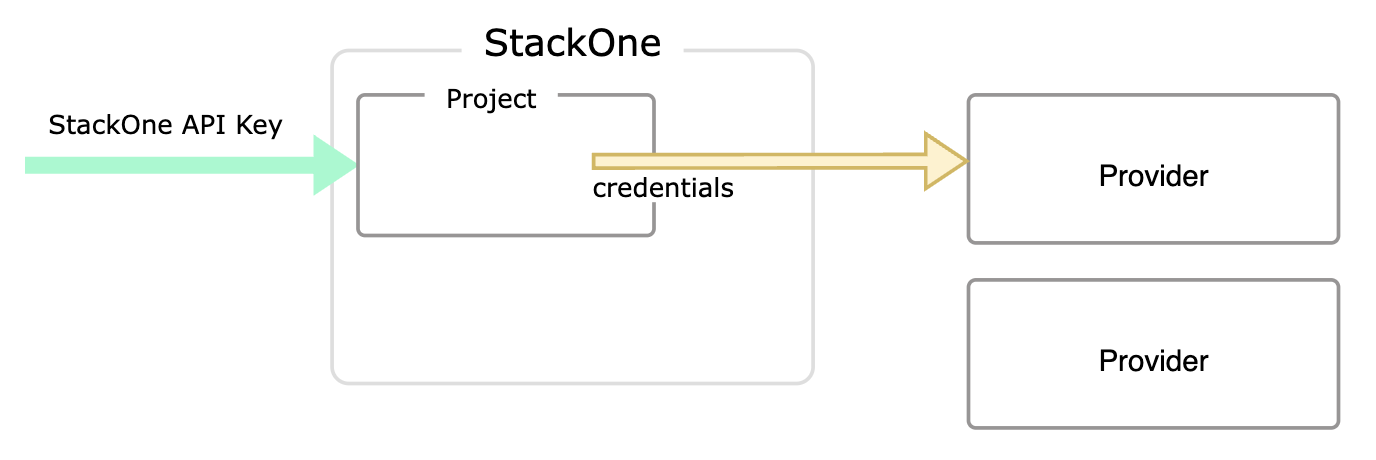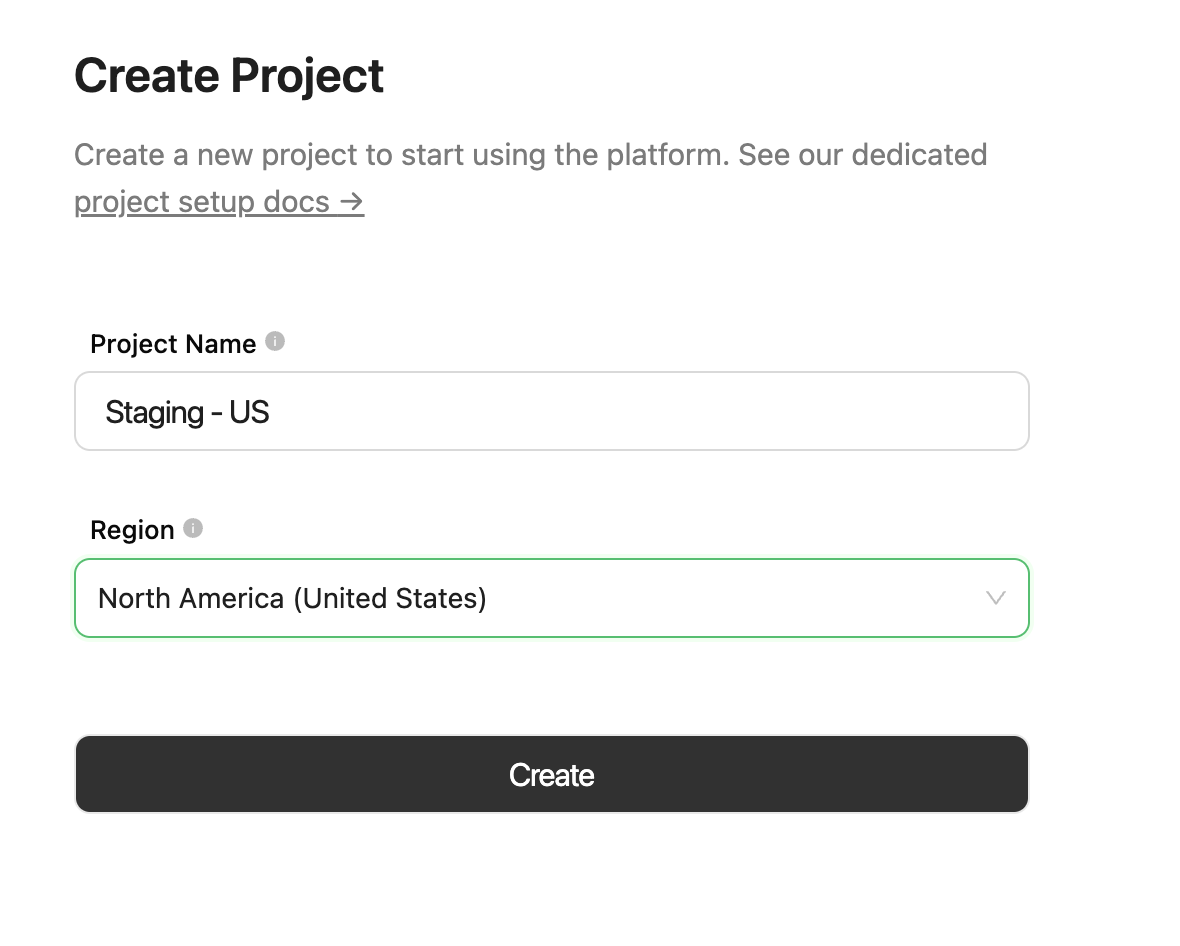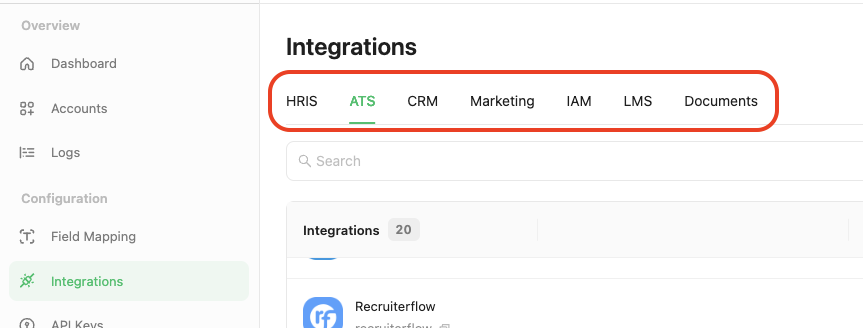Project
A Project is the construct that binds all of your StackOne integrations together. This is where your integration settings and linked account credentials are stored.
StackOne API Key
The API Key that you will use to authenticate all calls to StackOne.
Integration (aka Provider or Connector)
A company with a SaaS offering in any of our supported verticals such as HRIS, ATS, CRM, etc.


Making Your First StackOne API Request
Create a Project
To create a Project, navigate to the StackOne Dashboard and select Create New Project in the top-left dropdown. Give your Project a name and select the geographic region where you would like the transferred data to be processed.
A single StackOne Organization can contain multiple Projects. Learn more about this in the Managing Projects section.
Configure an Integration
In this step, we will configure an Integration for your newly created Project. From the StackOne Dashboard, click on the Integrations menu in the left-hand side. You will see several tabs, each containing the available Integrations for the selected software category.
Some Integrations may require additional details such as Client ID or Client Secret. These may have a slightly different setup process and may require partnerships.
API Key authentication type and click Save Changes.
You can now link any BambooHR tenant in your Project. To do this, click on Accounts in the left navigation and create an Auth Link or click Link Account.
You will be presented with a selection showing any enabled Integrations which will allow you to connect relevant systems you have access to.
Step-by-step instructions on how to use the Accounts page are detailed in the Accounts guide.

Using the StackOne Unified APIs
Once you’ve set up a Project and enabled Integrations, you can start using StackOne programmatically and via your user interface:- Create your first API Key and start using the Unified API programmatically
- Embed the StackOne Integration Hub
- Connect your AI agent via StackOne’s AI interfaces (early access)

